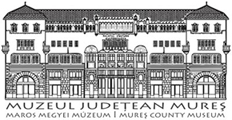Marisia - Maros Megyei Múzeum Évkönyve 33/4. (2013)
Articles
Akinakai ofKelermes Type: New Discoveries in Central Bessarabia 17 also provided with iron sleeves, despite some attempts69 could hardly attributed to Kelermes type, because by ‘their construction and function’ they could not be compared with early Scythian swords.70 With no doubt, the bight on the handle is the clearest and easily detected sign for early Scythian swords and daggers, including even the bimetallic ones. K. F. Smirnov has noticed an interesting detail on the hilt of sword from Lapot (Stenka Razin burial mound), namely the ledges ‘probably formed as a result of a failed moulding of a bight under the pommel’.71 As a result, according to him, functional considerations made it necessary to punch an opening in the handle. This fact as well as bimetallism in the combination with frame handle were interpreted by K. F. Smirnov as ‘archaic Caucasian features’. Such bights are known on other bimetallic swords with frame handles from Kumbulta-Galiat-Faskau72 and Kharkov museum of history.73 Generally, the manufacturing technology of early Scythian frame handles is determined as a ‘Cimmerian’ (Pre-Scythian) one. B. A. Shramko, for example, explains the preservation of ancient technological methods combined with new forms as the result of insufficient knowledge of complicated forging, forge welding with a well-developed technology of bronze moulding.74 In addition, there is another group of swords and daggers that could be attributed to Kelermes type, basing on their morphological similarity, despite of the lack of the bight on handle. One of the exemplars recently was found in the exposition of National Museum of Archaeology and History of Moldova, Kishinev, and was discovered in 1970s near Lipnic75, Oknitsa district (PL 1/3, PI. 69 Ismagil 2000, 137. 70 Tairov 2007, 144. 71 Smirnov 1961, 11. 72 In 1900 P. S. Uvarova published the fragments of a bronze frame handle from the cemetery near Kumbulta (Uvarova 1900, tab. XCV/3-4), then A. I. Terenozhkin basing on ther collection offered his own reconstruction (Terenozhkin 1975, 29, 34, fig. 20/6-7). In 1960 E. I. Krupnov published the fragments of handle from Faskau (Krupnov 1960, tab. XXX/3). It turned out that these fragments are from the same sword, but they were published with different names, creating a historiographical confusion. More about this historiographical curiosity see: Babenko 2006, 54. 73 Babenko 2006, 55, fig. 1; 2/3-4. 74 Shramko 1984, 30-31. 75 Earlier this akinakes was stored in Otaci local museum and was attributed as a ‘medieval dagger’ (sic!) of Stephen the Great time (probably due to geographical closeness to the Lipnic battlefield of 1496). I would like to thank V. Bubulici and E. Abyzova (find curators of National Museum of Archaeology and History of Moldova) for the 5/1). Total length of this well-preserved dagger is 29 cm. The blade with parallel edges and lenticular in section is 17 cm, the width is 2,7 cm, on the one side traces of a median rib could be observed. The handle is triform and consists of three shafts of the same size and same round shape, the dimensions are 7,6x2 cm (from pommel to the hafting plate), the thickness of shafts is 0,6 cm. The pommel is massive oval-shaped, the width is 4,5 cm, the height is 1,5 cm, the thickness is 1,4 cm. The hafting shaft is butterfly-shaped, the dimensions are 2,9x5,5 cm. Perhaps the bights on some exemplars were lost in antiquity, or probably were made from organic materials. Therefore first of all this group is based on such feature like triform handle made of three shafts, and the central is usually rhombic. It is quite possible that the shape of central shaft was influenced by manufacturing of akinakai i.e. due to the fact of making the blade with median rib and the handle by hot hammering from one piece of metal. It seems that on some exemplars the central rhombic shaft of the handle is a an extension of median rib of the blade, and two round shafts on the edges of hilt are rudimentary preserved from frame handles of bimetallic akinakai. Namely this detail shows the connection between Kelermes type and bimetallic akinakai, for which the design of moulded bronze frame had constructive importance. According to B. A. Shramko, if bimetallism disappears, this design becomes not constructive, but ornamental imitation.76 Perhaps this could explain ‘frame’ and ‘triform’ design of much more late exemplars until 5th c. BC. In this regard, akinakes from Imirler grave near Amasya (Anatolia, Turkey) is especially interesting. 7 Long sword from Imirler (PI. 6/10) is often compared to early Scythian akinakai, including exemplars from Kelermes and Litoj (Melgunov) barrow.78 It is notable that the cross section of the blade is rhombic with the rib in the middle and the handle with hafting plate was covered with iron frame.79 * The next most important features could be considered the massive pommel combined with butterfly-shaped hafting plate, then parallel edges of blade with the median rib. Basing on metric characteristics (i.e. length of blade) Kelermes type information. 76 Shramko 1984,31. 77 Onal 1982, 66. 78 Kossack 1987, 67; Ivantchik 2001, 42-48. 79 H. Hauptmann wrote that handle of this sword is made of bronze (Hauptmann 1983, 268), but V. Onal ignored the description of this quite important detail.
